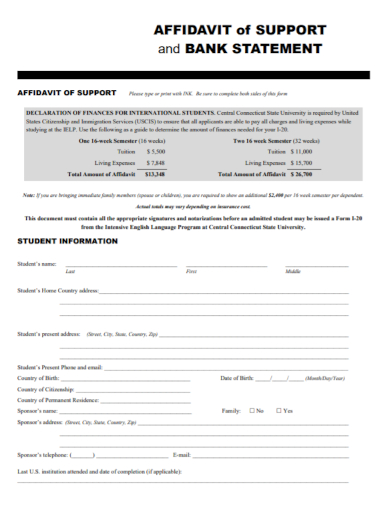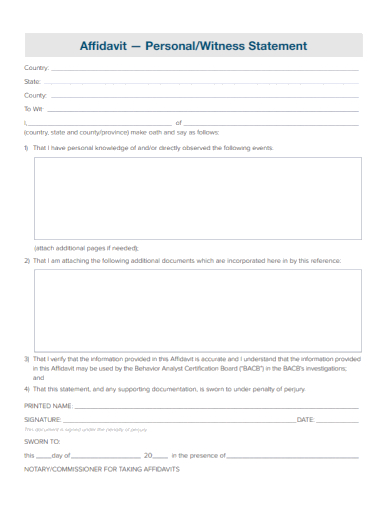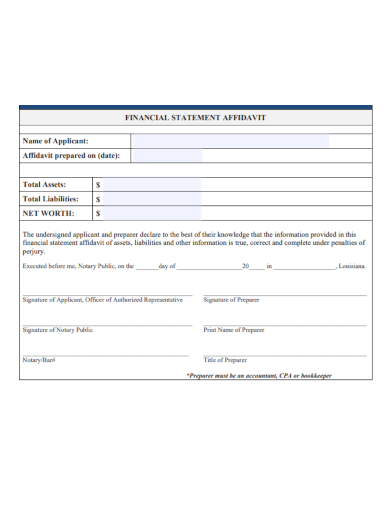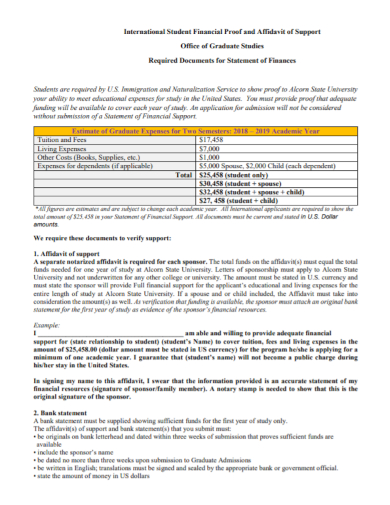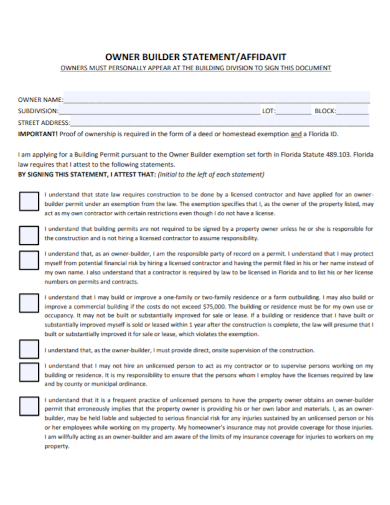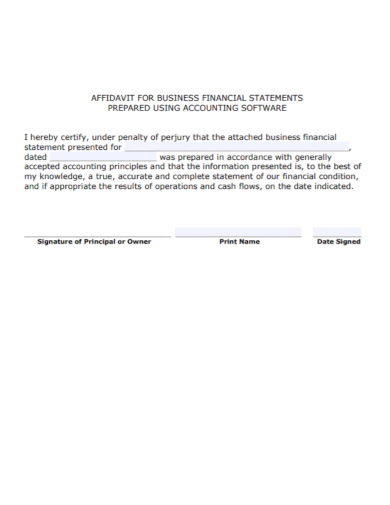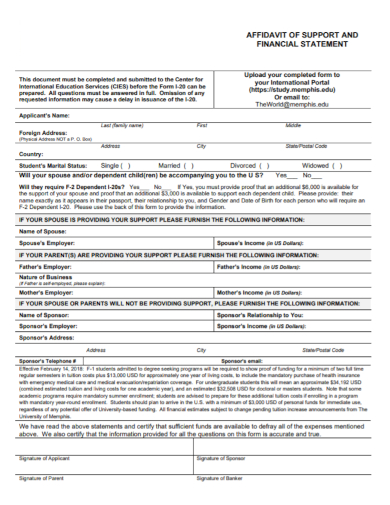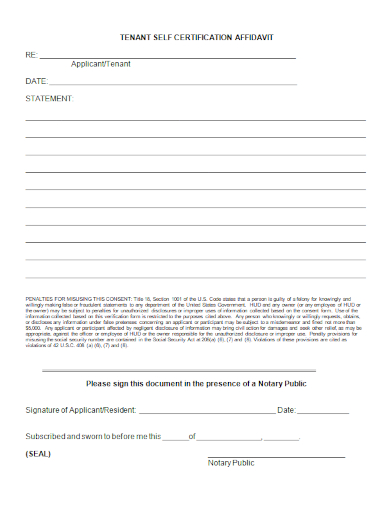Most people are more likely to encounter writing and presenting an affidavit for various reasons. Contrary to popular belief, an affidavit’s purpose does not limit to any criminal cases only, they can be used for business or even personal purposes. An affidavit is a powerful document to help prove the written statement is factual. Depending on where your location is there are different rules for what formats are accepted depending on your local courts and laws, so it is important to check the requirements for making an affidavit is. But there is a general format of the affidavit and the details it contain. Although some might seek help from an attorney to help create an affidavit, it is fairly easy to write one on your own. Read this article to help you on how to properly write an affidavit.
10+ Affidavit Statement Samples
1. Personal Statement Affidavit Template
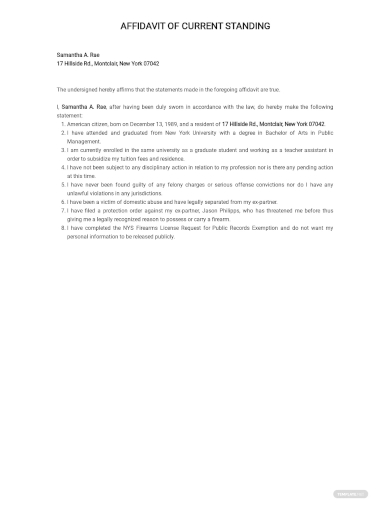
2. Financial Statement Affidavit Template
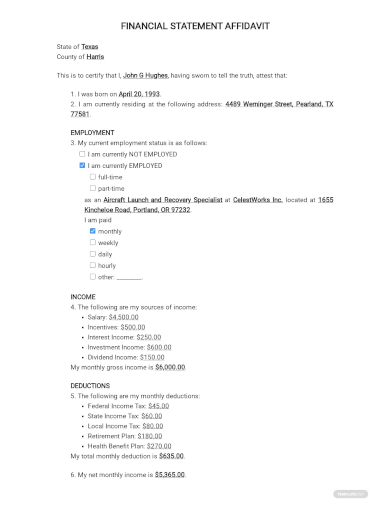
3. Affidavit Bank Statement
4. Affidavit Witness Statement
5. Sample Financial Statement Affidavit
6. Student Financial Support Affidavit Statement
7. Sworn Affidavit Statement
8. Owner Builder Statement Affidavit
9. Affidavit for Bussiness Financial Statement
10. Affidavit of Support and Financial Statement
11. Self Affidavit Statement
What is an affidavit?
An affidavit is a sworn written statement from an individual used in legal matters and that needs to be witnessed and notarized by a qualified party. It is an oath where the individual’s statement is the truth.
How to Write an Affidavit Statement
An affidavit is a legal document so it does have the right format to follow when writing one. As mentioned before, anyone can write an affidavit but it needs to be notarized by an attorney to make it valid. Below is the format for writing an affidavit.
1. Create a Title
The top part of the affidavit document is where you’ll place the title of the affidavit. The title tells what your sworn statement is going to be about. Include your name and the topic of the affidavit.
2. Make the Statement of Identity
This section is where you’ll write your personal information that is relevant to your case. Exclude other information that is unimportant to the case.
3. Make the Statement of Truth
This section is where you will swear that you are telling accurate facts of your case based on your knowledge and agree you that won’t lie. Write this section in the first-person point of view.
4. State the Facts
This section is the longest part of your affidavit since this is where you will state the facts of your case. Make sure to include all accurate information pertaining to the case. Avoid putting in your personal opinions; only state the facts in a concise and objective manner. If you’re stating events, write them down in chronological order. You also need to provide details such as names, dates, times and addresses to support your statement. To make your affidavit easy to read, you can number each paragraph.
5. Repeat the Statement of Truth
Once you’re done writing down all the facts, close everything out with another statement of truth. All you need to write is a summary that everything you’ve written above is true to the best of your knowledge.
6. Have Your Affidavit Signed and Notarized
To complete your affidavit, you need to let an attorney notarize it. You also need to sign the affidavit in the presence of the attorney, so don’t sign it yet unless the attorney sees you signing the affidavit.
FAQs
When might you need to write an affidavit?
An affidavit is not only limited to uses involving crimes. Sometimes an affidavit is used to detail an event, claim an inheritance, verify someone’s address, record business earnings, confirm that someone received legal documents, and determine child custody.
What are the different types of affidavits?
There are many different types of affidavits. Some examples of affidavits are affidavit of name change affidavit of identity theft, affidavit of inheritance, affidavit of residence, divorce affidavit, child custody affidavit, etc.
What is the difference between an affidavit and a sworn statement?
A sworn statement is much similar to an affidavit except the sworn statement does not need a witness to sign it and have an attorney or public official notarize it.
If you have attached additional documents to support your affidavit, the notary will need to review and sign those as well. Have them review it along with your affidavit. Furthermore, don’t forget to bring an official identification of yourself when you have your affidavit notarized to make sure you are who you are claiming to be. Now that you have a general grasp on how to write an affidavit, it’s time to start writing. To help you get started, download our sample templates above to serve as your guide format!
Related Posts
FREE 10+ Payoff Statement Samples in PDF | DOC
FREE 10+ Scholarship Statement of Purpose Samples in PDF | DOC
FREE 10+ Engineering Problem Statement Samples [ Software, Mechanical, Civil ]
FREE 30+ Information Statement Samples in PDF | MS Word
FREE 50+ Policy Statement Samples in MS Word | Google Docs | PDF
FREE 50+ Summary Statement Samples in PDF | MS Word
FREE 10+ Nursing School Personal Statement in PDF
FREE 9+ Mortgage Statement Samples and Templates in PDF
FREE 10+ Independent Subcontractor Statement Samples in MS Word | Google Docs | Apple Pages | PDF
FREE 10+ Trust Distribution Statement Samples in PDF
FREE 14+ Compliance Statement Samples & Templates in PDF | MS Word
FREE 10+ Extension Impact Statement Samples in PDF | DOC
FREE 10+ Bank Reconciliation Statement Samples and Templates in PDF | MS Word
FREE 10+ Diversity Mission Statement Samples in MS Word | PDF
FREE 10+ Architecture Statement of Purpose Samples [ Sustainable, Graduate, Master ]

